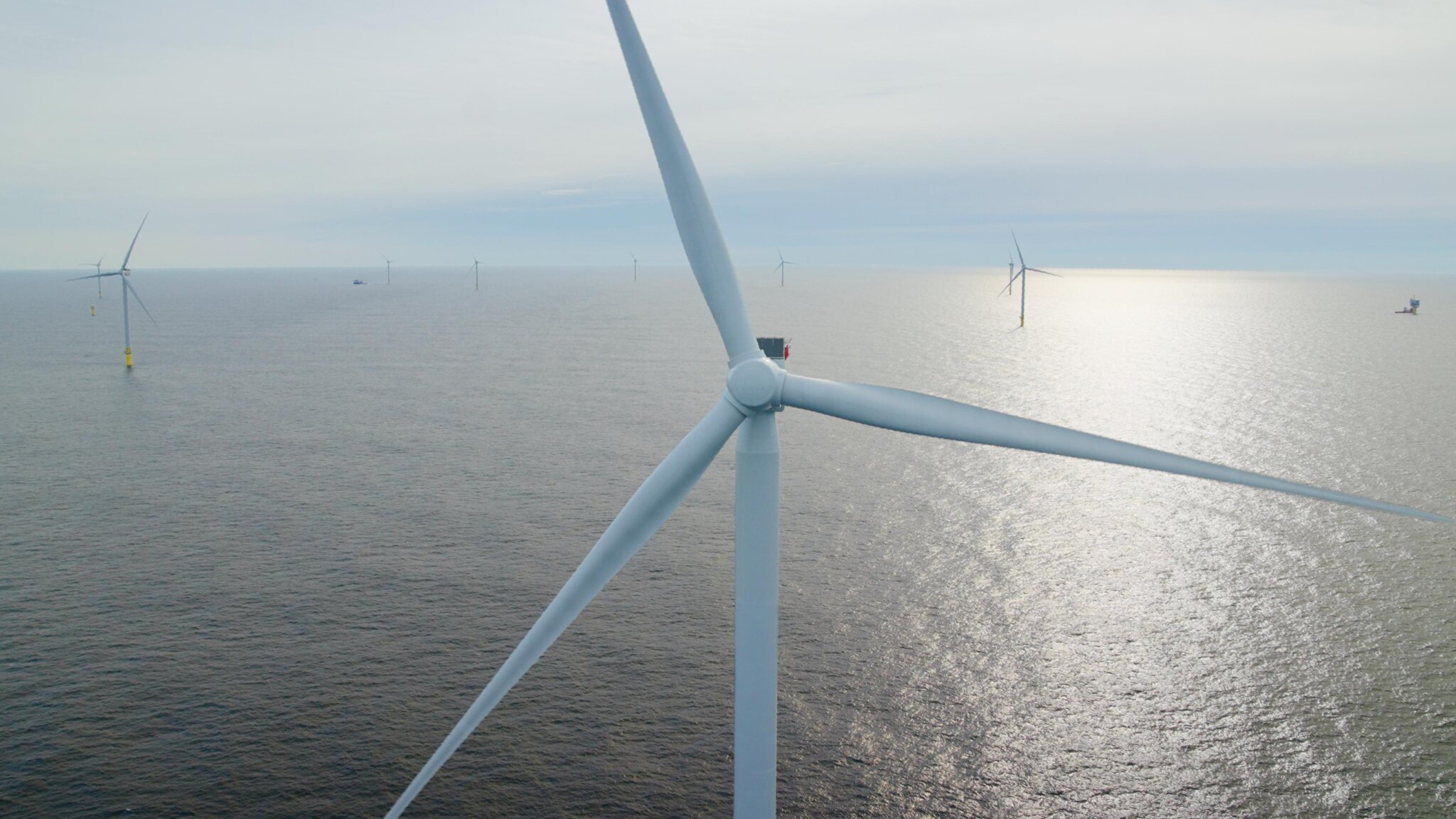Montauk Wind Is a New Power Source on Way to 70% Carbon-Free NY

In the battle to halt global warming, two wind power projects, one very big and one very small, are about to make changes in the Hamptons.
The big one is the line of 12 322-foot-tall windmills anchored out in the ocean off Montauk. The construction is done. The testing is done. And shortly, the switch to turn them on will be thrown. With that, the blades will turn and a strong surge of power will come roaring through the underwater cable connecting to our power grid in East Hampton where, after cutting off the need for oil, they will provide a continuous burst of wind power electricity to 70,000 homes.
We will be free at last from carbon-based fuel. And when you turn on your furnace, that old smell of oil will have vanished, replaced with, what, a breeze of salt sea air? Could be.
On the same day the announcement came about the offshore windmills, a second announcement was made about one of the 11 old 19th–century English windmills that dot our area. The Shinnecock windmill that sits atop the highest point on the Stony Brook University campus in Southampton is going to be restored. Once again, the wind will blow into the canvas on the 40-foot wooden blades of the mill, causing them to turn as they did years ago to get the gears inside turning so workmen can grind corn into meal and grain into flour.
This is a very big deal. The eastern end of Long Island is home to the largest collection of historic windmills in the country. They are a treasure. And though many have been restored, gracefully commanding hills on village greens, some need repair and some, such as the Shinnecock, need an entire renovation.
A consortium of government and private agencies had to be brought together to arrange the restoration of Shinnecock, including the state, the university and the town. The cost is expected to be about $5 million.
And I hope it is a full restoration, not just a prior renovation 40 years ago when the university occupying the site tore out all the handmade gears and wheels inside to convert it into a comfy guest house for visiting professors. (Playright Tennesee Williams lived in it in the summer of 1957. There he wrote a play called “The Day That a Man Dies,” a tribute to his late friend Jackson Pollock.)
I think this windmill and all the others should be restored inside to create power. Not to grind corn and grain, but to turn on some lights, in keeping with the needs of the 21st-century rather than the 19th.
Imagine it. All 11 land-based windmills, including those in Southampton, East Hampton, Bridgehampton, Shinnecock, Shelter Island, Gardiners Island, Southold, Water Mill and Amagansett, all whirring and turning in the wind. They would provide enough power to light up four 60-watt bulbs, one on each corner of the town greens where they reside.
Now wouldn’t that be something! The offshore line of windmills will provide 130 megawatts of power. Add that to the whirling of the 11 old windmills and you’ve got a new total of 130.0000006 megawatts.
We would be well on our way toward the governor’s goal that New York State be 70% free of carbon-based power by the year 2030.

______________________________________________
HELP PRESERVE DAN’S PAPERS 1960-2024
Stony Brook University intends to digitize the complete set of Dan’s Papers back issues (1960–2024) preserved in the Dan Rattiner Collection within their climate-controlled Whitman Library. A total of $130,000 is needed. Currently, $73,000 has been raised. Every dollar helps. Contribute? Write a tax-deductible check to “Stony Brook Foundation” marked “for Dan’s Papers archive” and mail to Stony Brook Foundation, 230 Administration, Stony Brook University, Stony Brook, NY 11794-1188 or visit sbugiving.com/danspapers.



